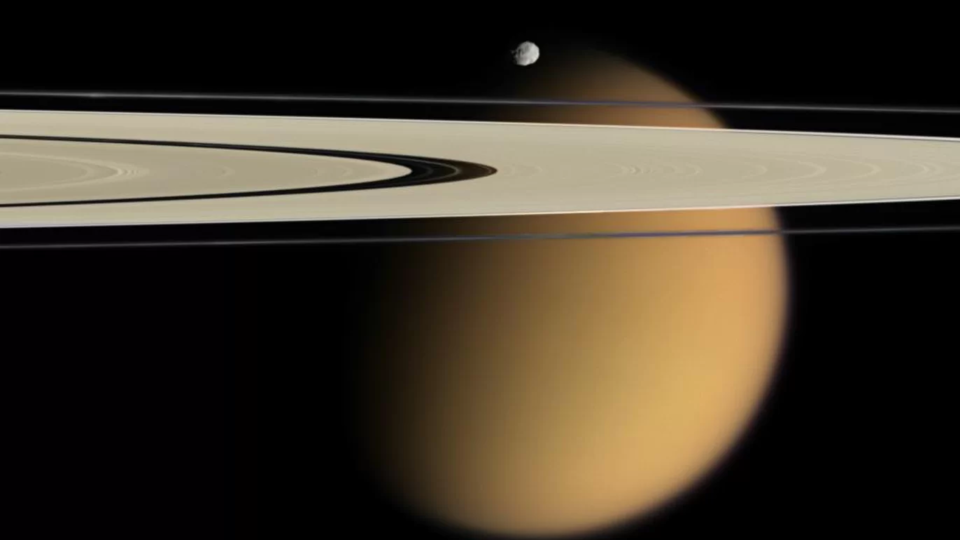Universe Update
Reflections on Titan

In the far-distant year of 2005, I was a dorky high school student, taking my first ever astronomy class to learn how to use my new telescope (and to impress dorky high school girls). My teacher, Phillip Deutschle, was—and still is—amazing. He came into the classroom obviously excited, giggling and gawping over “THE PICTURES”! We were tragically cool and above responding to genuine excitement, so he rolled a CRT television over to his desktop (digital projections was still rare ’way back then) and pulled up mottled orange blurs onto the screen.
“It looks like Santa Barbara!”
He explained that the images we were seeing were the first ever glimpse beneath the shroud-like haze around Saturn’s major moon, Titan.
The Mercury sized world had been revealed by the Voyager missions as a seemingly “Earth-like” world within our solar system. Voyager 1 had noted the nitrogen-rich atmosphere was the closest match to Earth’s that had been observed to date, but then it sped away.
We had certainly discussed the Cassini mission before this date, but it was one of the many blocky spacecraft we had mentioned in the class. I remember being astounded that someone could tell the difference between Voyager, Galileo, and Cassini.
But these images made it real. The realization that this was new information not yet in our text was exciting. Cassini eventually us much about Saturn that we never knew before, but the discovery of oceans, mudflats, and deltas on Titan will always stay with me.
As we learned more, the fleeting idea of standing on Titan and looking out at the alien sea became much less appealing. Titan was a chilly place, those oceans weren’t water—they were liquid methane and ethane but they cut a similar profile, carving lakes, streams, and even beaches into the rock-hard ices of the surface.
This really was terra incognita, and it was being uncovered before our very eyes.
While this sensation is perhaps well known to those who saw the stream of photos come back from Voyager and newly re-discovered for those who followed New Horizons, it is without a doubt one of the true dizzying highs of the astronomical field. It satisfies a very human desire to discover and to explore.
While the Huygens lander was the first, I sincerely hope that it is not the last craft to grace Titan. It seems the possibility of life on Titan is still existent, but slim. Any life that managed to find a foothold on Titan would be far more resilient than life on Earth, but that does not mean it does not exist. Potential future missions to Titan will look dramatically different than their more familiar Mars-bound cousins. The Titan expeditionary force would have to be designed more like gliders or balloons if they stayed in the atmosphere—or maybe take the form of an airboat to glide along the ethane and methane swamps. A lack of direct sunlight might hamper solar panels and low temperatures would force engineering challenges, but these are surmountable obstacles.
Cassini provided vast and valuable scientific insight into the Saturn system at large, and papers will be coming out for years, perhaps decades to come based on what the amazing mission has taught us over the past ten plus years—yet to me, nothing can quite compare to the revelation of the world beneath Titan’s clouds. I look forward to a future spacecraft’s visit—and to more revelations from my favorite moon